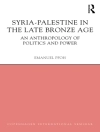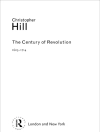In many ways what is identified today as “cultural globalization” in Eastern Europe has its roots in the Cold War phenomena of samizdat (“do-it-yourself” underground publishing) and tamizdat (publishing abroad). This volume offers a new understanding of how information flowed between East and West during the Cold War, as well as the much broader circulation of cultural products instigated and sustained by these practices. By expanding the definitions of samizdat and tamizdat from explicitly political print publications to include other forms and genres, this volume investigates the wider cultural sphere of alternative and semi-official texts, broadcast media, reproductions of visual art and music, and, in the post-1989 period, new media. The underground circulation of uncensored texts in the Cold War era serves as a useful foundation for comparison when looking at current examples of censorship, independent media, and the use of new media in countries like China, Iran, and the former Yugoslavia.
Daftar Isi
List of Illustrations
Foreword
Acknowledgements
Introduction
Section I: Producing and Circulating Samizdat/Tamizdat Before 1989
Chapter 1. Ardis Facsimile and Reprint Editions: Giving Back Russian Literature
Ann Komaromi
Chapter 2. The Baltic Connection: Transnational Networks of Resistance after 1976
Fredrik Lars Stöcker
Chapter 3. Radio Free Europe and Radio Liberty as the ‘Echo Chamber’ of Tamizdat
Friederike Kind-Kovács
Chapter 4. Contact Beyond Borders and Historical Problems: Kultura, Russian Emigration and the Polish Opposition
Karolina Ziolo-Puzuk
Section II: Diffusing Non-Conformist Ideas Through Samizdat/Tamizdat Before 1989
Chapter 5. “Free Conversations in an Occupied Country:” Cultural Transfer, Social Networking and Political Dissent in Romanian Tamizdat
Cristina Petrescu
Chapter 6. The Danger of Over-Interpreting Dissident Writing in the West: Communist Terror in Czechoslovakia, 1948-1968
Muriel Blaive
Chapter 7. Renaissance or Reconstruction? Intellectual Transfer of Civil Society Discourses Between Eastern and Western Europe
Agnes Arndt
Section III: Transforming Modes and Practices of Alternative Culture
Chapter 8. The Bards of Magnitizdat: An Aesthetic Political History of Russian Underground Recordings
Brian A. Horne
Chapter 9. Writing about apparently non-existent art: the tamizdat journal A-Ja and Russian unofficial arts in the 1970s-1980s
Valentina Parisi
Chapter 10. “Video Knows No Borders”: Samizdat Television and the Unofficial Public Sphere in “Normalized” Czechoslovakia
Alice Lovejoy
Section IV: Moving From Samizdat/Tamizdat To Alternative Media Today
Chapter 11. Postprintium? Digital literary samizdat on the Russian Internet
Henrike Schmidt
Chapter 12. Independent Media, Transnational Borders, and Networks of Resistance: Collaborative Art Radio between Belgrade (Radio B92) and Vienna (ORF)
Daniel Gilfillan
Chapter 13. “From Wallpapers to Blogs”: Samizdat and Internet in China
Martin Hala
Chapter 14. Reflections on the Revolutions in Europe: Lessons for the Middle East and the Arab Spring
Barbara J. Falk
Afterword
Jacques Rupnik
Selected Bibliography
Notes on Contributors
Tentang Penulis
Friederike Kind-Kovács is Assistant Professor in the Department of Southeast and East European History at Regensburg University.












